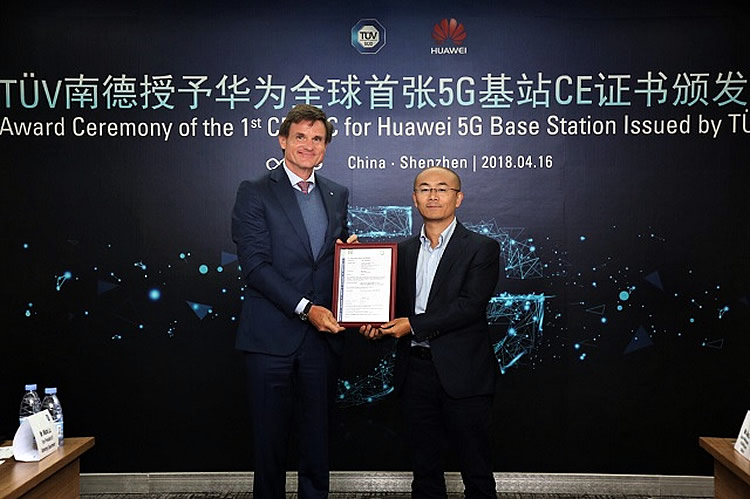
Huawei racked up the pressure on its competitors for 5G dominance, becoming the first company to be receive European Union CE-type examination certificate (TEC) for 5G products.
Huawei racked up the pressure on its competitors for 5G dominance, becoming the first company to receive a European Union CE-type examination certificate (TEC) for 5G products.
Its 5G NR [new radio] products have passed the European Union's certification authority’s (TÜV SÜD's) verification requirements – after several obligatory rounds of testing and evaluation – on its first attempt. CE marking is compulsory for products imported to and sold within the European Economic Area.
Huawei says the certification is a significant step towards full-scale commercial implementation of 5G. Huawei released its first 5G commercial chip and commercial terminal at Mobile World Congress in Barcelona in February. The company has announced plans to release its first 5G smartphone in the last quarter of next year.
The first of many
The first certified product is a large-scale antenna base station based on the 3GPP TS 38.104 specification and is designed for use where enhanced mobile broadband (eMBB) is needed to offer reliable, multi-gigabit coverage outdoors. This is one of the original scenarios (use cases) outlined by 3GPP for 5G at its inception.
Huawei says it strictly followed all relevant regulations during each step of 5G product development from component selection to product design. The products meet EU CE-TEC standards in terms of radio frequency, electromagnetic compatibility, electro-magnetic fields, and hazardous substances in electrical and electronic equipment.
TÜV SÜD, headquartered in Munich, is dedicated to professional testing, inspection, and verification. Huawei Wireless and MPE Global’s Compliance and Testing Center has forged a lasting long-term partnership with TÜV SÜD. The two parties are committed to exploring the verification technologies of communications products; 5G technologies and product forms are more complex than those of LTE, posing enhanced verification challenges.
Their combined efforts have yielded substantial breakthroughs in key verification technologies.
Useful read: What is 5G New Radio





